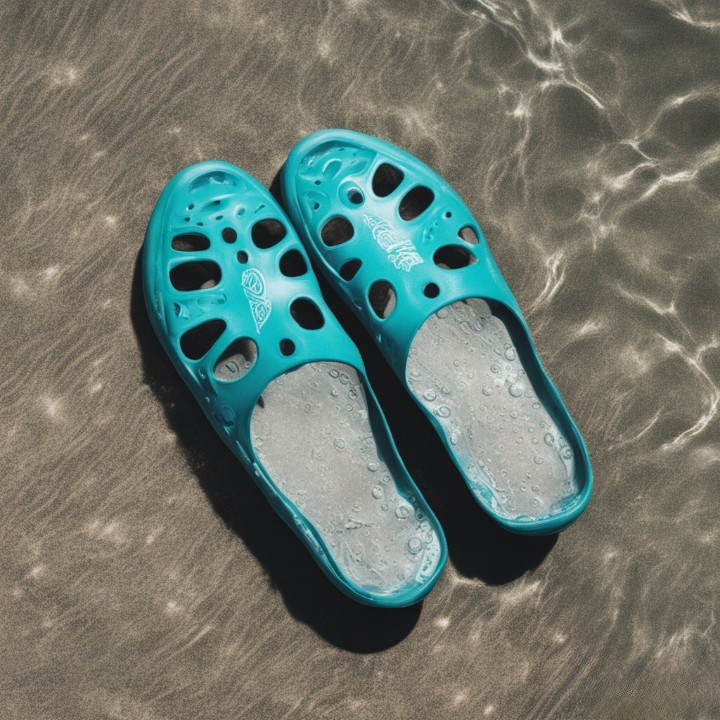During summertime, hitting the swimming pool is a great way to beat the heat and get some exercise. If you’re planning on swimming laps, doing some water aerobics, or just wading in the pool, you may be wondering whether you can wear water shoes. In this article, we’ll explore the pros and cons of wearing water shoes in the pool and provide tips for choosing suitable pool-friendly footwear.
Water shoes are specialized shoes designed for water activities and wet environments. They have thick, grippy soles to prevent slipping and quick-drying uppers to allow water drainage. While they provide protection for boating, hiking, and beachwear, can they also be worn in the pool?
QUICK ANSWER
Yes, you can wear water shoes in the pool in most cases. The top 3 water shoe options we recommend for pool use are:
- Speedo Surfwalker Pro 3.0 – Provides excellent traction and drainage.
- VIFUUR Aqua Socks – Lightweight and flexible fit.
- Zhuanglin Aqua Socks – Comfortable and protective.
Are Water Shoes Allowed in Pools?
Before strapping on your water shoes for a pool visit, check if they are allowed according to the specific pool’s rules and regulations. Most public and residential pools do not have restrictions against wearing water shoes. However, some facilities such as water parks may prohibit shoes of any kind in the pool for hygiene and safety reasons, as we covered in our article on wearing shoes in the pool. Contact your local pool to learn about their policies.
When wearing water shoes in the pool, be sure to rinse off dirt and debris before entering the water to maintain cleanliness. You should also be aware of other swimmers and avoid crowding the lanes or kicking others with your shoes on. Removing water shoes before using any amenities like slides is also courteous pool etiquette.
Benefits of Wearing Water Shoes in the Pool
Swimming with water shoes on your feet has several potential benefits:
- Protect Feet from Injury – Water shoes shield bare feet from scrapes and cuts caused by rough pool surfaces, drains, debris, etc. Their thick soles protect against bruises.
- Prevent Slipping – The textured rubber soles of water shoes provide traction on slippery pool decks, steps, and ladders where falls and injuries often occur. This slip resistance can provide stability for elderly swimmers, as covered in our guide on water shoes for seniors.
- Guard Against Infections – Water shoes create a barrier against germs and fungi that thrive in warm, wet environments like pools and locker rooms. This helps prevent conditions like athlete’s foot.
- Insulate Feet – Neoprene or mesh uppers help retain heat in cold pool water, keeping feet warmer. This allows for comfortable swimming, even in unheated pools.
Water shoes can be especially useful for children, seniors, or anyone with sensitive feet using the pool. They provide an added layer of comfort, protection, and stability.
Drawbacks of Using Water Shoes in the Pool
Despite their benefits, water shoes also come with some downsides when used for swimming:
- Weigh Feet Down – The added weight can make kicking and propelling through the water more difficult. This may impact competitive swimmers’ performance.
- Cause Drag – Bulky shoe uppers create more drag and resistance in the water compared to bare feet. This hinders speed and technique.
- Reduce Breathability – Water shoes trap moisture against the skin without quick evaporation. This leads to discomfort over time.
- Spread Germs – Can harbor bacteria and fungi without thorough cleaning and drying between uses.
- May Not be Compatible With Equipment – Webbed water shoes may not work with fins or paddles used for swim training.
Overall, water shoes are less suitable for lap swimming, races, or practice sessions where developing proper kicking technique is important.
Alternatives to Try
For those who want foot protection in the pool without wearing full water shoes, consider these options:
- Pool Socks – Made of nylon/Lycra, they fit snugly without adding bulk.
- Aqua Socks – Minimalist and flexible shoes meant for water.
- Disposable Booties – Some pools provide these for guests to wear.
- Swim Booties – Neoprene boots allow better kicks than shoes.
These alternatives offer coverage for pool floors without the drag of water shoes. We compared aqua socks vs water shoes in detail in this article.
Tips for Choosing Water Shoes for the Pool
If you decide to use water shoes in the pool, follow these tips:
- Prioritize drainage – Mesh uppers and ports allow water to flow out.
- Get a snug fit – Avoid shoes that are loose, which can slip off and be a drowning hazard.
- Check traction – Look for textured soles that provide grip on wet surfaces.
- Consider quick-drying materials – Fabrics like neoprene and nylon dry faster after use.
- Rinse thoroughly after use – Disinfect and prevent odor/bacteria growth.
- Store properly – Allow to dry fully before storage to avoid mold.
With the right water shoe choice and proper care, your feet can enjoy the pool safely and comfortably.
Final Thoughts
Can you wear water shoes in the pool? In most cases, yes, as they provide useful traction and protection. However, take note of pool rules, fit, swimming purpose, and other factors when deciding. Water shoes may hinder competitive or lap swimming. Lightweight aqua socks are a pool-friendly alternative. If choosing water shoes, pick an appropriate pair and maintain hygiene. Happy and healthy swimming!
